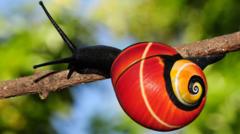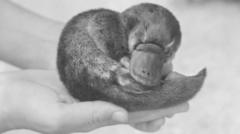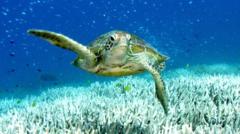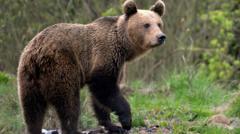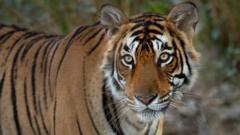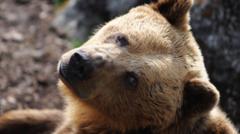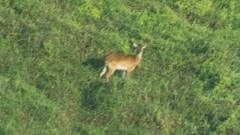An innovative classification emerges as researchers highlight genetic differences among giraffes, emphasizing the need for new conservation approaches.
**New Study Identifies Four Distinct Giraffe Species, Revolutionizing Conservation Efforts**

**New Study Identifies Four Distinct Giraffe Species, Revolutionizing Conservation Efforts**
Scientists discover three more giraffe species, altering conservation strategies worldwide.
By analyzing skull sizes and genetic diversity, scientists from the International Union for Conservation of Nature (IUCN) have officially recognized four distinct species of giraffes. Previously thought to consist of just one species, this groundbreaking revision suggests that giraffes’ evolutionary paths have been influenced by geographical barriers across Africa.
The research involved detailed comparisons of various skull characteristics that led to the conclusion that separated groups of giraffes have evolved distinctly. Historical separations by natural features such as deserts, rivers, and mountains have played a pivotal role in the diverging genetic makeup of giraffe populations, enabling them to be classified into four distinct species.
Among these newly recognized species is the Southern giraffe, which inhabits regions in South Africa, Namibia, Zimbabwe, and surrounding countries. The evidence indicates that this group was isolated from others by geographical barriers, specifically the Kunene and Zambezi rivers.
The second newly identified species is the Reticulated giraffe, which resides in Kenya, Somalia, and parts of Ethiopia. Researchers believe that the Tana River and surrounding mountainous regions contributed to its separate evolution, despite its migratory nature, which may have brought it into contact with other giraffes.
The Northern giraffe is the third distinct species, found in western Ethiopia, Kenya, and parts of South Sudan and Uganda. Researchers highlight the influence of the Nile River and Lake Victoria on the migration and evolutionary paths of this species, offering further support for its classification.
Lastly, the Masai giraffe, known for its unique leaf-patterned skin, resides in Kenya, Tanzania, and Uganda. Its differentiation from the Northern giraffe is attributed to geographical features like Lake Victoria and the Nile River, although variations in skin patterns within populations complicate identification.
As giraffes are currently classified as vulnerable to extinction, the IUCN emphasizes that understanding these species' unique genetic differences is crucial for designing effective conservation strategies. Michael Brown, a co-author of the assessment, expressed optimism that this new classification would enhance conservation efforts, enabling more targeted strategies to protect these remarkable animals. While some sub-species of giraffes have shown population increases, the re-assessment of this updated classification aims to provide a better framework for ensuring the survival of the species as a whole.
The research involved detailed comparisons of various skull characteristics that led to the conclusion that separated groups of giraffes have evolved distinctly. Historical separations by natural features such as deserts, rivers, and mountains have played a pivotal role in the diverging genetic makeup of giraffe populations, enabling them to be classified into four distinct species.
Among these newly recognized species is the Southern giraffe, which inhabits regions in South Africa, Namibia, Zimbabwe, and surrounding countries. The evidence indicates that this group was isolated from others by geographical barriers, specifically the Kunene and Zambezi rivers.
The second newly identified species is the Reticulated giraffe, which resides in Kenya, Somalia, and parts of Ethiopia. Researchers believe that the Tana River and surrounding mountainous regions contributed to its separate evolution, despite its migratory nature, which may have brought it into contact with other giraffes.
The Northern giraffe is the third distinct species, found in western Ethiopia, Kenya, and parts of South Sudan and Uganda. Researchers highlight the influence of the Nile River and Lake Victoria on the migration and evolutionary paths of this species, offering further support for its classification.
Lastly, the Masai giraffe, known for its unique leaf-patterned skin, resides in Kenya, Tanzania, and Uganda. Its differentiation from the Northern giraffe is attributed to geographical features like Lake Victoria and the Nile River, although variations in skin patterns within populations complicate identification.
As giraffes are currently classified as vulnerable to extinction, the IUCN emphasizes that understanding these species' unique genetic differences is crucial for designing effective conservation strategies. Michael Brown, a co-author of the assessment, expressed optimism that this new classification would enhance conservation efforts, enabling more targeted strategies to protect these remarkable animals. While some sub-species of giraffes have shown population increases, the re-assessment of this updated classification aims to provide a better framework for ensuring the survival of the species as a whole.



